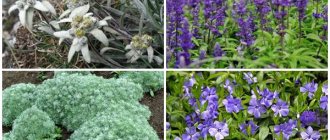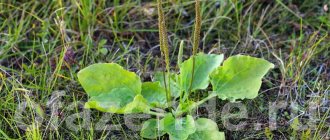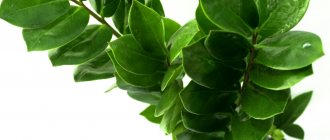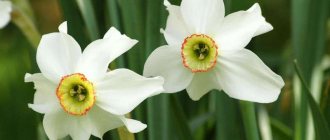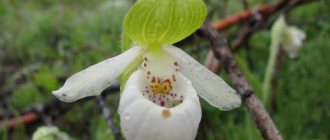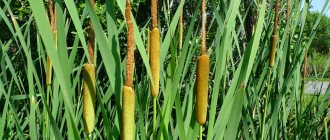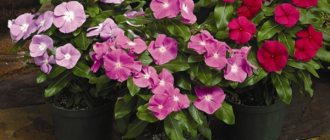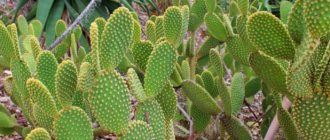The water lily belongs to the water lily family, which includes more than 50 species of perennials with powerful, fleshy rhizomes. A water lily is often mistakenly called a water lily.
This is an amazing flower. The white water lily (the Red Book of Russia includes it as a rare plant) among the Slavs was an obligatory component of various love spells. It was believed that this plant, taken on the road with you, would protect a person from any evil. Carl Linnaeus, a famous biologist who collected legends about this plant, was surprised by the fate of the nymph, rejected by Hercules, and turned into a water lily by the gods. Because of this, he decided to give the flower a Latin name in her honor - white nymphea.
Claude Monet, a French painter, painted “White Water Lilies” in oil on canvas in 1899. He reflected how beautiful the nature that surrounds us is.
Interesting things about the plant
White water lily (water lily) is a natural weather forecaster. There are a huge number of signs of plant behavior depending on the weather.
It has been observed over the years that if the flowers open early in the morning, the weather will be clear all day, while if it appears only at 9 am, it will rain. If it doesn’t appear at all, there will soon be a heavy and prolonged downpour.
Growing water lilies
To ensure that the process of growing water lilies does not cause unnecessary trouble, take the choice of planting material seriously. It’s not for nothing that they say: “The miser pays twice.” Buy planting material in specialized stores or borrow from trusted gardeners.
Warm summer months are considered a suitable period for planting water lilies. The plant can be immediately planted on the bottom of the reservoir, but it is worth considering that water lilies are terrified of frost and cold, so looking ahead, you should take this fact into account and plant the plant in a deep container, and only then install it on the bottom of the reservoir, this will make it easier to remove the flower and send for the winter.
You can get a planting substrate for water lilies in the store by purchasing ready-made soil for water lilies, or you can prepare it yourself. The optimal composition can be considered a layer of peat of 4 cm and 10 cm of turf soil with sand in equal parts.
During planting, make sure that the growth bud is on the surface of the pot; stick feeding balls made of clay mixed with mineral fertilizers onto the roots of the water lily.
3-4 pieces the size of a paintball ball will be enough. Afterwards, the rhizome is placed in a pot on a layer of peat and covered with prepared soil mixture on top, leaving room for a layer of river pebbles to weigh it down.
Immediately after planting the water lily, the plant must be placed at the bottom of the reservoir; the optimal depth for immersing the pot is usually calculated based on the varietal data of the plant. Dwarf varieties are placed at a depth of half a meter, tall ones from a meter or more; the growth bud of a water lily will serve as a guide for you.
In order for the water lily to develop faster, it is better to place it in shallow water before the first leaves appear. When the first two floating leaves appear, the pot with the plant is deepened.
Plants planted on time will bloom in your first year of growing season, and some varieties will delight you with even several blooms.
When planting, pay close attention to the cold resistance of the variety you choose. Some types of water lilies can survive mild winters without additional shelter, for example, water lily or snow-white water lily. Most often, high survival rates of water lilies are observed only in tall varieties whose rhizomes lie deep under water.
But if in your region the winter is long and harsh. For the winter, water lilies should be removed from the reservoir and sent to a dark, cool place, and with the onset of spring, after the ice has melted, returned to the reservoir.
White water lily: description
It is a stemless perennial herbaceous and aquatic plant with large, floating leaves. It belongs to the water lilies. It has a creeping rhizome, adjacent to it are heart-shaped leaves, as well as long stalks with white single flowers. Flowers with a large number of white petals, emit a light aroma, float on the water. Their calyx is four-leafed and green. Many stamens, radiate multipartite stigma. The fruits are spherical, green, and always ripen under water. Flowering occurs in June-July.
Water lily, plant description
The nymphea flower is a perennial aquatic plant with a long stem and a well-developed root system, hidden under a layer of silt and water.
Water lilies stay on the water due to powerful root processes with which the plant clings to the ground and wide floating leaves. At the nodes of a long, strong stem there are buds, from which, during the growing season, large leaves develop, some of which may be in the water, revealing only the uppermost and largest green “plates.” The leaf size varies from 25 to 35 cm, the plate is dense, dark green in color.
Nymphea blooms begin in the spring, revealing large water lilies in white, pink, pale yellow, purple and blue colors.
One of the interesting features of the water lily is its ability to close at night and go under water, restoring the freshness of the flower for a new day. The flower petals are very delicate, oval-pointed, cream, red or pink in color. Inside the bud are the stamens and pistil. The size of the flower is about 15-25 cm. The fragrance of the blooming nymphea covers an impressive territory.
When a water lily is pollinated, a fruit appears on the peduncle in the form of a seed capsule; it reaches full maturity under water, opening there and producing seeds. Water lily seeds first stay on the surface thanks to a thick slimy secretion, then, washed with water, they become heavier, sink to the bottom of the reservoir and grow.
The yellow core of a large flower of the Nile water lily was considered the temporary refuge of the sun god Ra, from the flower he showed the sun to the world. The Egyptians' belief in mystical legends prompted the priests to use the blue lotus in mummification rituals.
When opening the sarcophagus of Ramses, the remains of flowers were found (the mummy was showered with them), which turned out to be water lilies.
Water lilies are decorative in nature and are highly in demand for decorating artificial reservoirs. Gardeners often think about planting a water lily on their site, but they doubt whether they will be able to create conditions for the growth and development of the flower. Speculation is easily dispelled, thanks to the ability of the water lily to grow even in small (artificial) reservoirs with suitable temperature and soil.
Thanks to its presentable and memorable appearance, the water lily has long won the hearts of true connoisseurs of natural beauty. Flower growers all over the world breed water lotus as an ornamental crop.
Places of growth
It grows in the European part of our country, in the southern part of Siberia, in the Urals, Belarus, Ukraine, Eastern Transcaucasia, and the North Caucasus. The white water lily's habitat is standing and slowly flowing water (lakes, ponds, river bays).
Recently, the conditions for the plant to live in nature have been deteriorating, therefore, these days it has been included in the Red Book.
Using water lilies
The powerful rhizomes of the white water lily are rich in starch, protein and sugars. Flour is produced from dry raw materials; it produces approximately 2 tons per hectare. In the Caucasus, young rhizomes of the plant are boiled and fried.
At the end of summer, the water lily's seeds ripen and float to the surface in a capsule. If collected, they can be roasted and used as a coffee substitute. However, you should not abuse them because of the alkaloids they contain. Uncollected seeds sink to the bottom and germinate there.
Thanks to its tannins, glycosides, flavonoids and antioxidants, white water lily is used to treat gastrointestinal diseases, neuroses, constipation, hepatitis and other pathologies. The rhizomes of the plant are part of the Zdrenko collection, which is prescribed for cancer.
The nymphea takes root not only in the pond. There are special varieties for aquariums. Many people today are engaged in breeding and collecting these wonderful water flowers and are happy to share their experience and gorgeous photos of water lilies on social networks and forums.
Harvesting and collection
The period for collecting water lilies is selected depending on the required part of it.
If these are roots, then collection should be carried out in early autumn, when a huge amount of nutrients has already accumulated in them. They are extracted from the bottom using hooks, then cleaned of leaf cuttings and small roots. Then they are washed, cut into equal-sized pieces and dried in a ventilated room or outside in the shade.
If these are buds or flowers of the white water lily plant, then you need to accurately select the time of collection. This should happen during flowering. In addition, they need to be collected before 5 pm, and if just buds, then before 7 am or immediately after 5 pm, since the flowers are submerged under water after this time. Mostly flowers are taken fresh, but if necessary, they are dried in a ventilated, shady place.
The leaves of the plant can be collected in the fall before the onset of cold weather around the clock. The leaves are dried under the same conditions as all other parts - in a ventilated, shady room.
The fruits and seeds of the water lily are collected during its flowering (it must be borne in mind that one flower blooms for only 4 days): for example, the seeds are taken directly from the surface of the water, where they float in “capsules”, while the fruits are taken at a shallow depth under water. Seeds and fruits need to be dried after collection.
Although not only these rules are recommended to be followed by magicians and healers. When various parts of the water lily are torn off, you should always appease the water spirit, since this plant is under its protection: this can be done by throwing a piece of bread or a few coins into the water.
When collecting the plant, you need to remember that the water lily is listed in the Red Books in many countries, therefore, it can only be collected in limited quantities.
Types of water lilies
The water lily has become widespread throughout the world and has absorbed about half a hundred species. The palette of shades of petals and the size of buds of nymphs is varied. The Victoria water lily is considered the largest of all; with its impressive size and remarkable appearance, it has won the hearts of many gardeners. The closest relative of the water lily, the water lily, is less noticeable, but is not inferior to it in decorative qualities and popularity.
White water lily
Inhabits all of Eurasia, as well as Africa. The large water lily has impressive foliage of about 35 cm and large, milky flowers, reaching a diameter of about 20 cm. The root system is strong, located on the surface of the soil, tenaciously grasping the silt with long root processes. The root length is about 65 cm. The white water lily has underwater stems that form an entire bush. One water lily can cover quite a lot of free space in a pond. The white nymphea begins to bloom in the summer and lasts about three weeks, releasing large white water lilies with a yellow core to the surface.
Red water lily
It has a beautiful shade of flowers from dark pink to red, medium buds.
Blooming water lilies exude a pleasant, lasting aroma.
The root system is shallow and well developed. It has one main stem and several additional ones. The diameter of the flowers ranges from 12 to 20 cm. The leaves are fleshy, bright green, and reach about 25 cm in size.
Blue water lily
One of the very first and famous species. Another species is called the Egyptian lotus or Egyptian lily. The blue water lily inhabited the coastal zone of the Nile River, then began to spread throughout Africa, India and Thailand. The foliage of the plant is sinewy, large, about 35 cm long. Flowers with such large foliage seem small, reaching a size of 16-20 cm. The shade of the petals varies, from sky blue to cornflower blue, lilac and blue.
Tiger water lily
It is distinguished by large dark green leaves, uneven tiger color.
The distinctiveness of the tiger water lily is created by the pattern of the leaves (brown and red spots). It is seasonal, does not tolerate frost well, and is suitable for growing in aquariums. Africa is considered the birthplace of the tiger nymph. The flowers are small, white or cream in color. The root system is well developed and does not tolerate fast currents and cold water bodies.
Water lily Victoria Regia or Amazonian nymphea
Another species of impressive size. The Victoria water lily was discovered by the German botanist and naturalist Eduard Pelling in the 19th century. The Amazonian water lily blooms only once a year, blooming only at night, and sinks under the water before dark.
The shade of perhaps the largest flower changes during the flowering process from white to pink. When in full bloom, the Amazonian water lily can reach 35 cm. Victoria Regia has a persistent, noticeable aroma, and its foliage can support the weight of a teenager.
Yellow water lily
Yellow water lily is a perennial, with a well-developed root system lying deep in the ground. It has underwater small foliage with jagged edges, on short petioles.
The above-water floating leaves are ovoid, large, up to 20 cm in diameter. The flowers are large, green on the outside and yellow on the inside. They reach a size of about 17 cm. Flowering occurs in June and lasts almost until September.
water lily
Water nymph, from the water lily family. Botanically, it is similar to the white water lily; it has medium-sized floating foliage and small underwater leaves. The flowers are emergent, reach medium size, have a cream color and a bright yellow center. Water lily is used in pharmacology, and starch is obtained from the roots.
The most popular varieties of water lilies among flower growers were recognized as:
Alba (large, snow-white flowers), Gold Medal (yellow flowers with a large core), James Brydon variety (very beautiful variety with large, fluffy, burgundy corollas), Blue Beauty (has memorable blue flowers with a yellow core), Rosea (pink flowers, with a bright purple cup).
Application
The white water lily plant is actively used in folk medicine. An infusion of flowers is used to quench thirst, as a soothing and antipyretic effective remedy. An aqueous infusion of these flowers is used for insomnia as a sleeping pill and sedative.
Medicinal preparations from the rhizomes and roots of the plant help reduce skin inflammation, while when crushed they are used as mustard plasters.
If you add the leaves of the white water lily to the roots of the plant, this decoction will help with constipation and jaundice. The roots, boiled in wort, are consumed by nursing women, thereby increasing the amount of milk.
An alcoholic tincture made from the leaves is drunk for urolithiasis. In case of hair loss, it is recommended to wash your hair with a decoction of the roots of the plant.
The infusion, which is prepared from the flowers of this medicinal plant, is used for baths and washes, in addition to relieving pain as an external remedy.
Dry rhizomes can be ground into flour and baked into bread.
Plant care
Decorative water lilies care for them is as follows. They are best suited for decorating small garden ponds or ponds. It’s great if the surface of the water has good lighting. A little shading will not hurt, but complete shade will not allow the plant to develop properly and the water lily may not bloom.
One plant will require from 1 to 4 square meters. area of the reservoir. There should be no flow of water or fountain. Water is still or with little movement.
Plants are planted at the border between May and June. Usually the root is placed in a bucket or container for greater ease of care. You can also place the rhizome at the bottom of the pond. It is better to remove the plant from the pond for the winter. This applies to small ponds with shallow depths that freeze completely in winter.
Soil for water lilies consists of the following components: garden soil, peat, river sand, compost.
During planting, the growing point is not buried. It should be at the top of the ground. After planting, pebbles are laid on the ground so that it does not wash out in the water. The depth at which the plant should be placed will depend on the variety.
As the plant grows, the container with the plant is moved deeper into the reservoir. This is done before the buds appear to speed up growth. Further, all movements are harmful to the nymph.
Feeding lilies
Responds well to bone meal as a fertilizer. To do this, flour is mixed with clay. Roll into small balls. Place on the bottom near the root.
When a lily is planted in a pond, they always take into account how winter-hardy it is. There are species that winter well in a pond. Basically these are all tall varieties that require good depth of the reservoir. Water lilies that are not winter-hardy are taken to a cold room without lighting until spring.
Water lily propagation
Reproduction of water lilies in artificial conditions requires some experience. It propagates by seeds only under natural conditions. The best results are obtained by the vegetative method of propagation. In this case, all actions must be done dynamically so as not to dry out the root.
In order to propagate the plant, the rhizome is taken out of the water and divided into parts. Each part must have at least one bud. The sections are disinfected with charcoal. Then they are placed in any available container filled with water and sludge. Existing leaves on the cut part of the root are removed.
Diseases
Lilies have a strong immune system. You should pay attention to them in hot summers if the plant grows in a shallow body of water. It can be damaged by aphids. In general, they will not harm the water lily, but the buds may not bloom.
Snails are lovers of succulent lily leaves. They must be removed mechanically. The chemicals are not good in the water, so the snails are collected. Aphids can be removed with a stream of water.
Chemical composition
Most people regard water lilies solely as a beautiful plant. But it contains substances that make it a rather valuable plant. Of course, the rhizome is of greatest interest. Primarily due to the large amount of nutrients. The amount of starch in it ranges from 20 to 50 percent. In addition, there is up to 20 percent sugar and up to 10 percent protein.
True, the greatest concentration is achieved in the fall, when the plant is preparing for winter in order to survive until spring. When the water warms up enough, the rhizome sprouts new shoots, actively consuming stored starch so that the leaves quickly rise to the surface and bloom, receiving enough sunlight.
The rhizome also contains quite a lot of tannins, thanks to which it does not rot in water for a long time, easily surviving until spring.
Economic use
It would be strange if people did not appreciate the beneficial properties of rhizomes. In many countries where the water lily grows in swamps or lakes, local residents use this valuable plant.
For example, it is often grown as a cultivated plant - a huge amount of rhizomes can be collected from one hectare - up to 2 tons in dried form, which is a very good indicator. First of all, the rhizomes are used for food. They can be fried or boiled. By drying, you can easily grind the roots, turning them into high-quality and nutritious flour.
For many years they were used to dye fabrics brown and black. Finally, they serve as raw materials for the collection of Zdrenko - it has long been prescribed to patients with cancer.
The seeds don't disappear either. Since they contain alkaloids and tannins, some people use them as a coffee substitute.
Diseases and pests of water lilies
Nymph disease or insect attack is rare. But sometimes summer residents are faced with the appearance of fungal infections, rot and pests:
| Problem | Remedy |
| Aphid | Wash off colonies mechanically |
| Pitcher leaf beetle, marsh moth | Collect individuals by hand, cut out damaged leaves |
| Leaf spot, powdery mildew | Leaves covered with black round spots should be cut out. Treat affected plants with antifungal drugs |
The most dangerous disease for nymphs is black rot. It starts from the root system and affects the entire plant. The main signs of infection: blackening of the roots, yellowing leaves, unpleasant odor. An infected specimen can only be saved with a medicinal bath:
- Remove the container with the nymph from the pond and place it in a fungicidal solution.
- When the exposure time of the drug is over, replace the solution with clean water.
- Keep the water lily in quarantine for 20-30 days.
If during this time the signs of black rot disappear and the plant begins to recover, it can be returned to the pond. Otherwise, the sick nymph will have to be destroyed.
Distinctive features and what a water lily looks like
Nymphea is very easy to distinguish from any other plant. It is almost completely submerged in water, except for the surface leaves. Early in the morning the flowers emerge and gradually open. During the day, white water lily flowers cannot be seen in one place.
The light-loving plant moves along the surface of the reservoir in the direction of the sun. After dusk, the buds shrink and sink into the water.
The underwater part of the plant is the stems-rhizomes and underwater leaves. The stems are horizontally immersed in the ground, numerous roots in the form of cords extend from the rhizomes down to the sides, which hold the plant tightly in the ground, leaves and flower stalks grow upward from the roots.
Main types of nymphs:
- Snow White . A distinctive feature is large, 20 cm, dark green leaves and 10 cm, bright white flowers. A flower of this type is viable for 3 to 5 days.
- White . The flowers and leaves are larger than those of the snow-white one. The upper part of the leaves is green and reddish on the reverse side. The color of the buds is creamy, sometimes pink or red.
- Tetrahedral . It is distinguished by small flowers, only up to 5 cm in diameter, white or pink.
- Knobby, tuberous . Large view with white buds. Prefers greater depths of more than 1 m.
- Fragrant . Bright green leaves, painted red on the back, white buds. A water lily of this class has a bright, pleasant aroma.
- Dwarf . Small flowers 2-2.5 cm in diameter, medium bright green leaves with a crimson turnover. They grow in shallow waters up to 30 cm.
- Hybrid . A single name for cultivated species, they have a variety of shapes and colors: yellow, pink, blue, milky, do not grow in the wild.
- Blue . Narrow petals of blue or pink flowers, characterized by a bright, pleasant aroma.
- Brindle, spotted . White buds and variegated underwater leaves. Unlike all its fellows, it blooms at night.
Underwater leaves are different from those that float on the surface. They have an oblong shape with a pointed top and base, rolled up in the shape of a cap, inside which are the flower buds and the embryo of the surface leaf.
Water lilies or water lilies are the best plants to decorate a pond! How to plant water lilies?
Water lilies or nymphs
Name: the Latin name was given by the name of one of the water nymphs. In Slavic fairy tales, the idea of water lilies is associated with the mysterious image of a mermaid. Scandinavian legends say that each water lily has its own friend - an elf, who is born with it and dies with it. According to ancient Greek myths, the water lily was once a white nymph, but then she died from love for Hercules, who remained indifferent to her, and turned into a beautiful flower. The water lily nymph is also called the “child of the sun”: its beautiful flowers open in the morning and close at dusk.
Description: the genus includes about 35 species of aquatic plants growing in temperate and tropical regions of the globe - from the equator to Scandinavia and Canada.
Pure white or snow-white water lily – Nymphaea сandida
Usually found in Central Russian natural reservoirs . In the substrate of the bottom of the reservoir, it develops a powerful rhizome with a tuberous surface, reaching 5 cm in thickness. White cord-like roots extend down from the rhizome, and flexible, succulent petioles and peduncles rise to the surface of the water. Flowering of water lilies begins in May-June and sometimes continues until the first frost, the peak of flowering occurs in July-August .
At this time, ponds are covered with beautiful wide glossy leaves 20-25 cm in size floating on the surface, round in outline and with a deep cut at the base, and snow-white flowers with a delicate aroma, reaching 10 and sometimes even 15 cm in diameter. The flowers have 4 green sepals on the outside, and on the inside there are numerous white petals arranged in several rows, turning into stamens in the center. After flowering, the peduncle curls and the fruit develops under water. When the capsules are ripe, they open, seeds spill out of them, they float for a while, and after the mucus is destroyed, they sink to the bottom and germinate. This is how aquatic plants reproduce in nature.
White water lily – Nymphaea alba L. Nymphaea alba
Homeland - freshwater reservoirs of Eurasia and North Africa.
A rhizomatous perennial with rounded leaves floating on the surface of the water on long petioles. The leaf blade is up to 30 cm in diameter, noticeably unequal, entire-edged with a heart-shaped base. Young leaves are reddish, mature leaves are dark green above and reddish-purple below. The flowers are large, up to 15 cm in diameter , slightly fragrant, milky white, with petals gradually turning into numerous stamens with flattened and expanded stamen filaments. The fruit is berry-shaped, round. It ripens under water and then blooms on the surface with beautiful flowers.
Dwarf water lily – Nymphaea pygmaea
A tiny white water lily , possibly of hybrid origin, with flowers up to 2.5 cm in diameter and oval dark leaves, beet-colored on the reverse side. It grows at a depth of up to 30 cm, just like its varieties: white “Alba” (small green leaves, propagated by seeds), yellow “Helvola”, red “Rubra” (leaves with brown spots).
Other interesting species:
Water lily (Nymphaea tetragona). Another species that is found in Russia in our North and Siberia. It is quite miniature, white flowers do not exceed 5 cm in diameter.
The tuberous water lily (N. tuberosa) is a large North American water lily with horizontal rhizomes on which there are tuberous outgrowths. The flowers are white. Its varieties are: “Rosea” with pink flowers with red stamens and “Richardsonii” with exceptionally large snow-white flowers lying on light green leaves.
Fragrant water lily (N. odorata) - from North America. The flowers are white, up to 15 cm in diameter, with numerous sharp petals, fragrant, in accordance with the name. The leaves are bright green, purple when young, and usually reddish below when mature. Planting depth is 40-80 cm. There are a number of varieties with pink, yellow, cream flowers. Interesting dwarf ones: white “Minor” and yellow with spotted leaves “Sulphurea”, both of them are suitable for ponds 30 cm deep.
Hybrid water lily – Nymphaea hybridum
Types of water lilies
There are two large groups of nymphs - winter-hardy and tropical. Most of the tropical species are too thermophilic and can only grow in greenhouses or winter gardens, since their development requires a water temperature of at least 25°C. But winter-hardy varieties can be grown in open reservoirs in the northern regions of the European part of Russia and Siberia. Of course, the main advantage of hybrid nymphs is their amazingly beautiful flowers, symbolizing absolute perfection. But these beauties are decorative not only during flowering. Some are grown for their incredibly showy leaves. Depending on the variety, the leathery, heart-shaped leaves differ in size and color. In some plants it is light green, in others it has a burgundy tint, and sometimes it can even be marbled-spotted.
The predominant number of water lily varieties are of hybrid origin. In particular, varieties of K. Leydeker (N. x laydekeri) and K. Marlika (N. x marliacea).
White. "Caroliniana Nivea" - large fragrant flowers, depth 30-80 cm, "Virginalis" - large flowers and leaves, depth 20-80 cm. "Gonnere" - unusually double flowers, clearly organized, depth up to 100 cm. N. x marliacea "Alba" - pure white, powerful, abundantly flowering variety, depth 20-60 cm. N. x marliacea "Albatros" - even more powerful variety, for depths up to 2 m.
Pink. "Caroliniana Rosea" - bright pink, abundant flowering, depth 20-60 cm. "Caroliniana Perfecta" - salmon pink. N. x marliacea “Carnea” – calyx and outer petals are pink (brighter than the inner ones), central ones are completely white, powerful variety for depths up to 2 m. N. x marliacea “Rosea” – large flowers, pink calyx, paler petals , immersion 20-100 cm. “Rose Arey” - pure pink flowers with narrow petals, rising above the water, depth 20-40 cm.
Yellow and orange tones. "Charlene Strawn" - flowers of pure golden color with narrow, numerous petals. Grows at a depth of up to 100 cm. "Comanche" - copper-orange flowers and leaves with a brown pattern, blooms profusely, depth 15-30 cm. N. x marliacea "Chromatella" - numerous, pale flowers, leaves with a brown pattern, powerful variety for ponds 0.3 - 1.5 m deep.
Red and crimson. “Attraction” - crimson, immersion up to 200 cm. “James Brydon” - intense cherry color, double flowers, compact, with rounded petals, depth up to 150 cm.
All types and varieties of water lilies are good, without exception. However, many of them have their own characteristics that determine the final choice. For example, of the yellow varieties, 'Chromatella' , which also has variegated leaves, grows and blooms better than others in partial shade. The profusely blooming bright pink 'RoseArey' has flowers with long, pointed petals, while the soft pink 'Carnea' has very large flowers. 'Escarboucle' is good because its huge flowers (up to 25 cm in diameter) are in no hurry to close when evening comes, and the dark burgundy-red color of the petals has no analogues, it is so bright and rich. White 'Gonnere' is unique with its super-double flowers . Among the most powerful varieties is 'Gladstoneana' with snow-white flowers of fantastic size.
In the southern regions, hybrid forms of the Cape water lily - N. capensis Thunb - are widely used. and red water lilies - N. rubra Roxb., with varied flower colors.
Location:
Water lilies prefer a sunny location - in full shade they bloom little and produce small leaves. water lilies to bloom well, a few hours of sunlight is enough . There should be gaps between groups of plants of different colors. It is clear that a large number of water lilies cannot grow in a small pond. Often the desire to have a good collection of aquatic plants determines the size of the reservoir already during its design and construction. But the splendor of the nymphs is worth it.
Planting and transplanting:
The time to purchase and transplant water lilies is from the beginning of May to the end of September. Plants can be planted directly into the ground at the bottom of the reservoir, and in small pools it is much more convenient to place them in various containers - pots, boxes, baskets, bowls, etc.).
In this case, it will be convenient to remove the plants for the winter or move them to another place. For planting, it is better to choose low but wide containers with drainage holes. If the holes and crevices in their walls are too large, the inside of the containers can be lined with burlap or perforated plastic film.
Usually, to plant nymphs, they try to take silt from the bottom of some reservoir, but this does not make much sense. It is much better to use old compost with the addition of coarse sand and garden soil. Bone meal is an excellent fertilizer for water lilies. But it cannot be scattered on top of the substrate - it will be immediately washed off with water. You can mix it with soil, but in this case it will quickly mineralize, the nutrients will dissolve in the water, will no longer have a beneficial effect on the nymphs and will lead to flowering (greening) of the water. a special aquatic plant fertilizer under their rhizomes when planting or as needed
How to plant water lilies (water lilies, nymphs)?
1. Place the plant in the ground without deepening the growing point.
2. To prevent the newly planted plant from floating up and the soil from being washed away, sprinkle the surface of the soil with gravel or small pebbles.
3. Compact the soil well and water the container.
4. Carefully place the container in the pond at such a depth that the leaves of the nymphea float freely on the surface (they may be curled, over time the leaves will straighten)
The roots grow on one side, which should be the bottom when planting. They are pressed down with earth so that the plants do not float up. Large cuttings are planted horizontally. The rhizomes are half covered with substrate. Growth points cannot be buried. Small cuttings can be planted vertically. If newly planted plants float, they need to be pressed down with stones. When planting water lilies in large bodies of water, you can tie a stone to pieces of rhizomes and throw them into the desired place.
The optimal depth to which the container is lowered depends on the variety. For dwarf nymphs, 15-25 cm is enough, for vigorous ones - 70-100 cm. For most varieties and species, the ideal depth is 50-80 cm. By this we mean the distance from the growth bud to the surface. In spring, nymphs develop faster if they are brought closer to light and warmth. For this purpose, while there are no leaves, the plants are placed smaller - at half the specified distance. After the leaves grow, the nymphs are lowered to the recommended depth. The leaves will drown, but after 2-3 days they will reappear on the surface of the water.
Water lilies can be planted in the soil at the bottom of a reservoir if it is up to 30 cm thick. To prevent the rhizomes from floating, they are attached with wire or, similar to planting in a container, the ground is pressed down on top with crushed stones and small stones. Plants planted early have time to take root and bloom quite luxuriantly in the first year of life in a new place.
Plants can remain in their places in winter if they are at a depth of half a meter or more (counting from the growth points to the surface of the water), and the reservoir is very large. In this case, there are no problems with wintering water lilies: they winter well without special shelter. If the reservoir freezes to the bottom, then the containers with water lilies should be removed, placed in containers with water and placed in a cool but frost-free place.
You can leave the water lilies in the pond, but to do this they will have to be covered with peat and covered with a layer of leaves, sawdust or sand on top. This should be done when your pond is left without water in winter.
Many types of water lilies are plants of tropical and subtropical climates. They live in reservoirs, the water level in which during the dry season is greatly reduced, and the bottom in places becomes bare and dries out. In such unfavorable conditions, water lilies are preserved thanks to their tubers, which contain eyes and renewal buds. Some tropical types of water lilies can be grown in temperate climates , but for the winter they must be removed from the reservoir and stored in containers with water in a warm, bright place.
Nymphs awaken in early spring, when the ice melts and the water begins to warm up. At this time, it is time to return plants that have spent the winter outside the reservoir (in a frost-free basement) back into the pool. Containers from the basement or greenhouse are transferred to the pool and installed at the required depth. By this time, it may be filled with melt water, which does not need to be drained to install containers. If there is not enough water, the pool is filled with tap water. A few days will pass, and the water will “bloom”, becoming cloudy green. And in a week it will be crystal clear, but only under one condition - do not change the water. Spring frosts no longer pose a danger to frost-resistant species, even if a crust of ice forms again.
Diseases and pests:
Water lilies, as a rule, do not get sick and do not have malicious pests. However, in dry, hot years they can be damaged by aphids. The plants themselves are not affected, but some buds do not open and die. What to do if holes appear on the leaves of water lilies, the leaves turn yellow and rot? Anti-aphid drugs are used.
Reproduction:
pieces of rhizomes and seeds. Seeds are planted in the ground at the bottom of a reservoir, or in containers with soil, then immersed in water. Under our conditions, hybrid water lilies are not regenerated by seeds; they can only be propagated by dividing the rhizomes. The rhizomes of water lilies are branched and have dormant buds. For propagation, you can use any piece of rhizome with a bud. It is usually recommended to sprinkle the cuts with crushed charcoal. Pieces of rhizomes without buds are not suitable for propagation - they can only be thrown away.
Of course, roots and leaves do not tolerate drying out , so do not prolong the process of dividing and planting rhizomes and keep them in damp paper or cloth until planting. If the water lily grows directly in the substrate of the bottom of the reservoir, then the main thing when dividing the bush is to properly dig up the rhizome.
Using a sharp shovel, cut out a marked square of approximately 20 x 20 cm at the base of the rosette and carefully pull the leaf petioles. Once the main rhizome is cut, the plant will drag itself out of the water with little effort. The leaves of the dug up water lily are separated from those remaining in the water and, if there are a lot of leaves, they are partially removed. The plant is placed in a container with water and in this form is transported to the planting site, and is also stored for several days.
The best time for planting is May-June . When choosing a species or variety, focus primarily on the size of your pond. It is better to use special containers for planting. Old leaves are removed and the top of the rhizome is placed just above the soil level. We could talk about the soil for nymphs for quite a long time, since this is a matter of constant search and debate. In short, the substrate should be based on a viscous component, for example, white clay with the addition of silt. Such a substrate will not allow the rhizome to float up after planting, and the container itself will be quite heavy and stable at the bottom.
Nymphs are offered for sale in various versions: small containers with rhizomes, which need to be planted later, or already planted plants in containers of various sizes. The first option is the cheapest, but it is more convenient to then transplant the plant into a large pot of 3-5 liters, which can be ordered on our website. The plant will have enough nutrients for a long time before the question of replanting arises.
The plants are replanted (more precisely, transferred) when the rosettes extending from the rhizome become crowded. The new container should be 1.5-2 times larger than the previous one. For abundant annual flowering, it is recommended to divide the nymphs every 4 years. There is already positive experience of growing them in the Moscow region. However, even winter-hardy nymphs cannot tolerate freezing of the rhizome. Therefore, it is necessary to plant them in a sufficiently deep (freezing-free) place in the reservoir. Shallow water species should be grown in containers at a suitable depth and moved to a deeper location for the winter.
The most reliable way to preserve a nymph until spring is as follows: the rhizome of the plant in the same container in which it was during the growth period is kept in the basement at a temperature of +5-8 ° C. In this case, the container is placed in a container of water so that the water reaches its upper edge. You can also bury the container with the rhizome in the ground. In this case, the layer of soil above the pot should be at least 20 cm. During the winter, you need to ensure that there is a constant snow cover in the burial area. You should study the issue of fertilizing in advance .
Of course, creating a reservoir and growing nymphs is not cheap and labor-intensive. But, believe me, it’s worth the effort to watch with bated breath all summer how divine flowers float to the surface in the morning and open under the rays of the sun.
Water lily in mythology
Many peoples who are well acquainted with this amazing plant have developed many legends associated with water lilies. The plant received its Latin name - Nymphaea - from a water nymph. A beautiful girl fell in love with Hercules and suffered from love for him. When he said that he did not reciprocate, the unfortunate nymph could no longer remain herself, and the gods mercifully turned her into a beautiful flower that pleases everyone who sees it.
In our country, as in most Slavic countries, water lilies are directly related to mermaids (not to be confused with sea maidens with tails). It is these flowers that drowned girls prefer to use to decorate their hair.
Legends are told about water lilies in Scandinavia. Here, many people believe that each flower has its own companion - a tiny elf. He is born when the water lily blooms for the first time. Throughout the short Scandinavian summer, a tiny man lives in a flower that blooms at sunset and closes when the sun sets below the horizon. Well, with the arrival of cold weather, the flower dies, and the elf, alas, also dies, only to be reborn in the spring.
Wintering of water lilies
There is no need to worry when planting rhizomes in the soil of a deep reservoir. By autumn, the upper part of the plant will die off, only to come to life again in the spring and continue the life cycle.
But if you choose a small body of water that will probably freeze to the bottom, you will have to take care that the root does not die in the winter. Fortunately, you have provided for this - when most of the plant dies, you can safely remove the container along with the rhizome from the water and take it to a cool place, for example, a cellar or basement, where the temperature does not fall below zero, but at the same time does not rise so much for the plant to awaken.
In the spring, when the water in the reservoir on the site has warmed up sufficiently, you only need to lower the container to the bottom in order to admire the beautiful and sophisticated plant all summer.
Methods for propagating nymphs
The easiest way to get another water lily seedling is to divide the rhizome into 2 or more parts. The propagation procedure is best carried out in the spring after wintering or during the next transplant. To do this, you need to remove the rhizome from the container and divide it into several parts so that each has 2-3 buds and several thin roots. The seedlings need to be placed in separate containers and placed in a pond in shallow water, and as they grow, transferred to the desired depth.
Bookmarks 0

